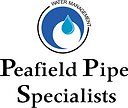Hydrostatic pressure testing is a critical quality control technique used in various industries to ensure the integrity and reliability of pressure vessels, pipelines, and other equipment that operate under pressure. This method involves subjecting the component in question to a controlled increase in fluid pressure to assess its ability to withstand the expected working conditions. While hydrostatic pressure testing offers numerous advantages in terms of safety and quality assurance, it also presents certain disadvantages and challenges. In this article, we will explore both the advantages and disadvantages of hydrostatic pressure testing to provide a comprehensive understanding of its role in ensuring the safety and reliability of pressurized systems.
Advantages of Hydrostatic Pressure Testing
Detecting Weaknesses and Flaws
One of the primary advantages of hydrostatic pressure testing is its ability to detect weaknesses and flaws in pressure equipment. By pressurizing the system with a liquid, any imperfections, such as cracks, weld defects, or material weaknesses, can become evident as leaks or deformations. Identifying these issues early in the testing phase allows for necessary repairs or replacements, preventing catastrophic failures during operation.
Ensures Safety
Safety is paramount in industries where pressure vessels and pipelines are involved, such as oil and gas, chemical processing, and nuclear power generation. Hydrostatic pressure testing ensures that equipment can safely contain the intended pressure without posing a risk to personnel or the environment. This proactive approach minimizes the chances of accidents and potential disasters, protecting both workers and the public.
Compliance with Regulations
Many industries are subject to strict regulations and codes of practice governing the design, construction, and operation of pressure equipment. Hydrostatic pressure testing is often a mandatory requirement to demonstrate compliance with these regulations. Conducting these tests helps companies avoid legal issues and penalties while maintaining their reputation for safety and reliability.
Quality Assurance
Hydrostatic pressure testing is an integral part of quality assurance programs. It helps manufacturers and operators verify that the equipment they produce or use meets industry standards and specifications. This leads to increased confidence in the performance of pressure systems and a reduced likelihood of product recalls or warranty claims.
Identifying Potential Leaks
Leaks in pressurized systems can have severe consequences, from product contamination to environmental damage. Hydrostatic pressure testing is highly effective in identifying potential leaks, no matter how small they may be. This sensitivity to even minor leaks ensures that any issues can be promptly addressed before they escalate into more significant problems.
Disadvantages of Hydrostatic Pressure Testing
Costly and Time-Consuming
One of the most significant disadvantages of hydrostatic pressure testing is the cost and time associated with conducting the tests. Filling, pressurizing, and draining large vessels or pipelines can be a labor-intensive process that requires specialized equipment and skilled personnel. Additionally, the downtime required for testing can result in production delays, which can be costly for businesses.
Risk of Damage
In some cases, hydrostatic pressure testing can pose a risk of damage to the equipment being tested. Over-pressurization or improper procedures can lead to deformations, leaks, or catastrophic failures, especially in older or corroded systems. Careful planning and execution of the test are essential to mitigate this risk.
Environmental Concerns
The disposal of large volumes of test fluids, often water, can raise environmental concerns. Discharging contaminated test water into natural water bodies or the municipal sewer system may require additional treatment or permitting, depending on local regulations. This can add to the overall cost and complexity of hydrostatic pressure testing.
Limited Detection of Certain Defects
While hydrostatic pressure testing is effective in identifying many types of flaws and weaknesses, it may not detect defects such as stress corrosion cracking or fatigue cracking that only occur under cyclic loading conditions. Complementing hydrostatic testing with other non-destructive testing methods may be necessary to address these specific concerns.
Risk of Water Contamination
In applications where the tested equipment comes into contact with potable water or other sensitive fluids, there is a risk of contamination during hydrostatic pressure testing. Special precautions must be taken to ensure that the test water does not introduce impurities or harmful substances into the system, which can be a complex and costly process.
Conclusion
Hydrostatic pressure testing is a valuable tool for ensuring the safety and reliability of pressure equipment in various industries. Its ability to detect weaknesses, ensure compliance with regulations, and provide quality assurance makes it an indispensable part of quality control and risk management programs. However, it is essential to recognize the associated disadvantages, such as cost, time constraints, and environmental considerations, and take appropriate measures to mitigate them. Ultimately, the benefits of hydrostatic pressure testing in terms of safety and peace of mind far outweigh the drawbacks, making it an indispensable practice in industries where pressure vessels and pipelines play a critical role.
